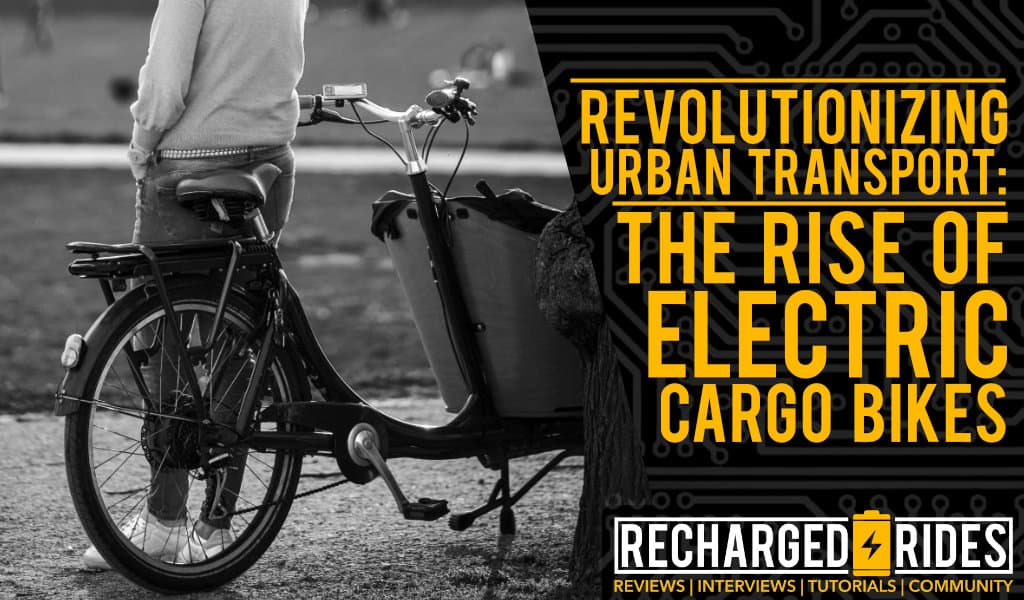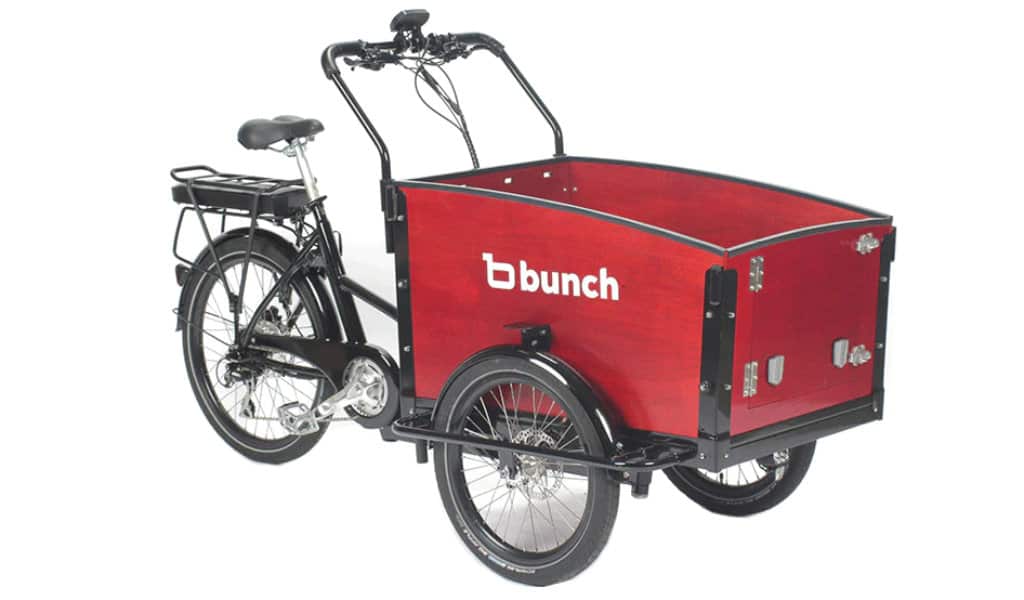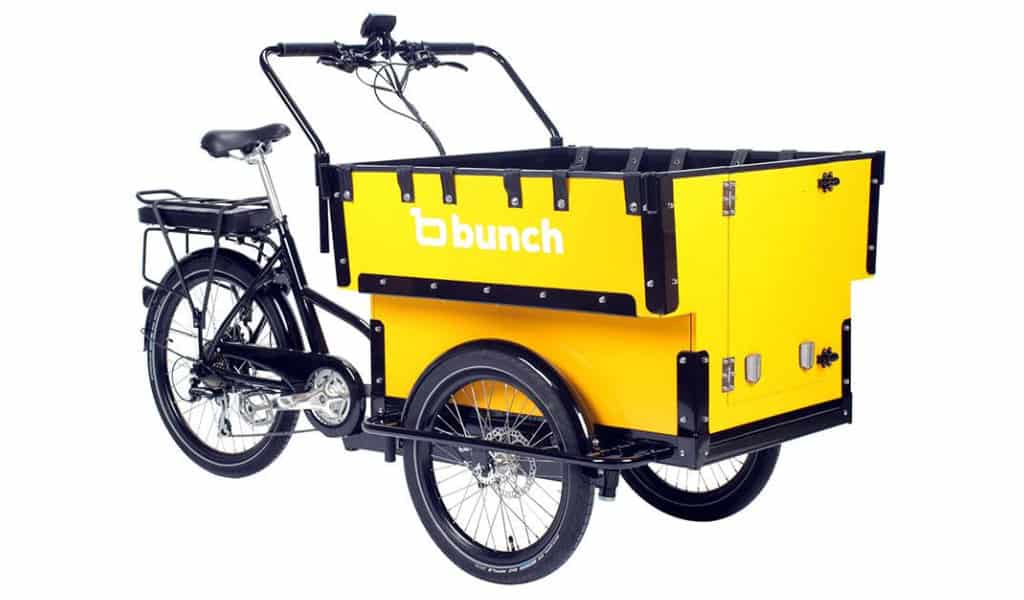
Whether you’re a commuter looking for a greener way to get around, a business owner looking to reduce costs, or simply someone interested in the future of urban transportation, electric cargo bikes quickly becoming a go-to alternative to gas-powered vehicles. They are quickly becoming a game-changer for urban transportation, providing sustainable alternatives to traditional cargo bikes and cars while simultaneously revolutionizing the way we commute, deliver goods, and even run businesses in cities worldwide.
Electric cargo bikes offer numerous benefits that can help tackle some of the biggest challenges facing cities today. For starters, they can reduce traffic congestion and air pollution by providing an efficient alternative means of transport. Additionally, their ease of use and accessibility makes them ideal for those who are unable to use more traditional methods of transportation due to physical limitations or distance from public transit hubs.
It’s not just individuals that are taking advantage of electric cargo bikes either; cities, businesses, and organizations across the globe have already started to incorporate them into their operations. For example, UPS recently began testing electric cargo bikes in London as part of its commitment to reducing emissions through sustainable solutions. Similarly, New York City is rolling out an initiative that will allow food delivery companies like DoorDash and Postmates to use electric cargo bikes instead of cars when making deliveries.
All these examples demonstrate how powerful electric cargo bikes can be when it comes to improving our daily lives and reshaping the future of urban transportation. In this article, we’ll explore the modern-day potential of cargo e-bikes, and see how they can make an impact far into the future!
What is an Electric Cargo Bike?
An electric cargo bike, also known as a cargo e-bike, is powered by an electric motor usually located in the rear hub, providing pedal assistance to the rider. Their large cargo area, often located at the front or rear of the bike, allows them to carry a range of items such as cargo, kiddos, and even pups.
Electric cargo bikes come in two main types: two-wheelers and three-wheelers. Two-wheelers have a more sporty look and feel and are favored by commuters, while three-wheelers are more stable and can carry heavier loads better due to their longer wheelbase and more stable center of gravity. Three-wheelers are more common in urban areas for deliveries or as a replacement for cars.
The electric motors provide additional power to the rider which can be adjusted depending on preference. This helps when tackling hills or headwinds and can also allow you to carry more weight without becoming exhausted. Electric cargo bikes have different power outputs and ranges so you can choose the best one suited to your needs; some models even offer up to 100km range! They’re becoming increasingly popular with commuters and cargo riders alike making it a great alternative mode of transport.
Recommended Electric Cargo Bikes
Cargo E-Bikes for Commuting and Urban Transport
I’ve seen firsthand how electric cargo bikes can be an efficient and sustainable solution for commuting and urban transportation. With expanded range, increased speed, and cargo capacity, these bikes are becoming increasingly popular in cities around the world.
The range of an electric cargo bike can vary depending on factors such as the size of the battery and the weight of the load being carried, but many models can travel up to 30-50 miles on a single charge. The electric motor also allows the rider to achieve a higher top speed than they would be able to with a traditional bicycle, making them a viable option for longer commutes. Additionally, electric cargo bikes offer larger cargo-carrying options such as baskets, panniers, and trailers; allowing riders to carry more items than what would usually fit onto a regular bicycle.
In urban areas, electric cargo bikes can also help reduce traffic congestion and air pollution. As they are smaller and more nimble than cars, electric cargo bikes can more easily navigate through traffic and take up less space when parked. They also produce zero emissions which is better for the environment. Examples of organizations that have embraced this technology include Amsterdam’s delivery services that use cargo bikes instead of cars, Portland’s low-income shared bike program supported by the city government, DHL using them for emissions-free deliveries in European cities, and the Danish Agriculture and Food Council promoting their use among farmers for daily delivery tasks.
In conclusion, electric cargo bikes present a great opportunity to make commuting simpler while also helping reduce air pollution in urban areas. It’s clear why so many cities are now introducing policies to encourage their use – because they are reliable solutions that promote sustainability without sacrificing convenience or comfort.
Delivery and Logistics Applications
Electric cargo bikes are a sustainable and efficient alternative to traditional fossil fuel-powered vehicles for delivery and logistics. One key advantage they bring to the table is their ability to navigate through traffic and congested urban areas with ease. This makes them well-suited for last-mile delivery, which refers to the final leg of a delivery journey from a transportation hub to a customer’s doorstep. In contrast to larger delivery vehicles, e-cargo bikes can reach locations that are inaccessible to cars, such as narrow alleys or pedestrianized areas. This can save time and increase efficiency for delivery companies.
Another advantage of e-cargo bikes is their low environmental impact. They emit no pollutants and produce little noise, which makes them a popular choice for companies and organizations looking to reduce their carbon footprint.
Real-life examples of companies and organizations that have adopted electric cargo bikes for delivery and logistics include:
- UPS is currently using electric cargo bikes for package delivery in city centers
- DHL in London uses electric cargo bikes for deliveries to reduce congestion and emissions
- The Royal Mail in the UK piloted an e-cargo bike program to reduce emissions and noise pollution
- In urban areas, companies that deliver food, flowers, and groceries are using e-cargo bikes as a cost-effective and environmentally friendly delivery method
E-cargo bikes are increasingly seen as a viable option for delivery and logistics companies looking to improve efficiency and reduce environmental impact. They are especially well-suited for last-mile delivery in urban areas, and their popularity is likely to continue growing in the coming years.
E-Cargo Bikes in E-Commerce and Retail
E-commerce and retail businesses can take full advantage of electric cargo bikes for a variety of tasks. From making deliveries to transporting goods between warehouses and stocking store shelves, electric cargo bikes are particularly well-suited for delivering smaller items such as clothing, electronics, and groceries. Not only do they save time by reducing delivery time and improving the customer experience, but they also help us have a smaller ecological footprint, which is beneficial for our company’s image.
Electric cargo bikes have several advantages over traditional delivery vehicles. They are more cost-effective since they require less maintenance and are cheaper to operate. Additionally, they reduce the number of delivery trucks on the road, lowering transportation costs while helping to reduce traffic congestion. They are also better suited for last-mile deliveries in narrow streets or pedestrian areas inaccessible to cars.
We can find many examples of companies that have adopted electric cargo bikes in their operations. Amazon is using them in the UK for package delivery; Ikea uses them for home deliveries and transporting goods in Amsterdam; Zalando uses electric cargo bikes for last-mile delivery in Germany; and grocery chains like Whole Foods Market in the US or Tesco in the UK are using e-cargo bikes to deliver groceries in urban areas. The US Government is even getting in on the action, with the USPS reportedly testing electric cargo bike mail delivery.
Community and Non-Profit Use
Over the years, I’ve witnessed the many ways in which community and non-profit organizations can benefit from electric cargo bikes. From delivering meals to the elderly or disabled, transporting donations and supplies, and facilitating community gardening and other environmental projects, these bikes are an invaluable asset for non-profits looking to promote cycling and sustainability in their area.
Not only are electric cargo bikes more cost-effective than traditional delivery vehicles – requiring less maintenance and being cheaper to operate – they also have the advantage of being able to access otherwise difficult places such as narrow streets, pedestrian areas, and parks. On top of this, they produce no pollutants, making them especially valuable in densely populated areas.
Examples of organizations that have adopted electric cargo bikes include Meals on Wheels in Portland, Oregon; Bike Works in Seattle, Washington; The Red Cross in Denmark; as well as various green initiatives and farmers markets around the world. Each has seen remarkable success with these bikes when it comes to providing services and transportation to their communities.
Final Thoughts
It’s clear that electric cargo bikes are revolutionizing a variety of industries, from delivery and logistics businesses to e-commerce and retail. Providing an efficient and eco-friendly alternative to traditional gas-powered vehicles, cargo e-bikes can help businesses boost efficiency, lower costs, and increase overall customer satisfaction. In this article, we’ve highlighted some of the companies that are already using e-cargo bikes successfully, but the list continues to grow by the day.
If you enjoyed learning more about the different ways electric cargo bikes are being used, or if you happen to have questions, please leave a comment below. Who knows, maybe you’ll soon be incorporating e-cargo bikes into your own business operations!



